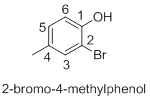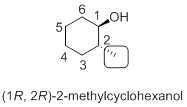
(a)
Interpretation:
The structure of the given compound should be drawn.
Concept introduction:
(a)
Answer to Problem 29PP
The IUPAC name of the given organic compound is 2-propyl-1-pentanol.
Explanation of Solution
To find: IUPAC name of the compound
The IUPAC name of the given organic compound is 2-propyl-1-pentanol which is shown here.


Identify the parent chain of the compound. Here the hydroxyl group which is attached to the carbon is included as a parent. Given the numbers for the carbon atom in a long chain (parent chain), so parent chain having five carbon atoms is called as pentanol. There is a side chain which indicated above in the structure. There are three carbons in the side chain which is attached on C2 carbon atom. The IUPAC name of the given organic compound is 2-propyl-1-pentanol.
Conclusion
The IUPAC name of the given organic compound is found.
(b)
Interpretation:
The structure of the given compound should be drawn.
Concept introduction:
IUPAC nomenclature: A systematic method of naming organic chemical compounds is called as IUPAC nomenclature of organic chemistry.
(b)
Answer to Problem 29PP
The IUPAC name of the given organic compound is (R)-4-methyl-2-pentanol.
Explanation of Solution
To find: IUPAC name of the compound
The IUPAC name of the given organic compound is (R)-4-methyl-2-pentanol which is shown here.


Identify the parent chain of the compound. Here the hydroxyl group which is attached to the carbon is included in the parent. Given the numbers for the carbon atom in a long chain (parent chain), so parent chain having five carbon atoms is called as pentanol. There is a side chain which indicated above in the structure. There is one carbon in the side chain which is attached on C4 carbon atom and assigns the configuration for the chiral center. The IUPAC name of the given organic compound is (R)-4-methyl-2-pentanol.
Conclusion
The IUPAC name of the given organic compound is found.
(c)
Interpretation:
The structure of the given compound should be drawn.
Concept introduction:
IUPAC nomenclature: A systematic method of naming organic chemical compounds is called as IUPAC nomenclature of organic chemistry.
(c)
Answer to Problem 29PP
The IUPAC name of the given organic compound is 2-bromo-4-methylphenol.
Explanation of Solution
To find: IUPAC name of the compound
The IUPAC name of the given organic compound is 2-bromo-4-methylphenol which is shown here.


Identify the parent of the compound. Here the phenol is the parent compound. The numbering is started in carbon atom which is bearing hydroxyl group in the given structure. There is two substituent (bromo and methyl) are attached on the ring and indicated in above structure. Bromine atom is attached on C2 carbon atom and methyl group is attached on C4 carbon atom of the phenyl ring. The IUPAC was given according to the alphabetical manner. Therefore, The IUPAC name of the given organic compound is 2-bromo-4-methylphenol.
Conclusion
The IUPAC name of the given organic compound is found.
(d)
Interpretation:
The structure of the given compound should be drawn.
Concept introduction:
IUPAC nomenclature: A systematic method of naming organic chemical compounds is called as IUPAC nomenclature of organic chemistry.
(d)
Answer to Problem 29PP
The IUPAC name of the given organic compound is (1R, 2R)-2-methylcyclohexanol.
Explanation of Solution
To find: IUPAC name of the compound
The IUPAC name of the given organic compound is (1R, 2R)-2-methylcyclohexanol which is shown here.

Identify the parent chain of the compound. The hydroxyl group which is attached to the carbon is included in the parent. Given the numbers for the carbon atoms in cyclic chain (numbers starts from carbon atom which is bearing hydroxyl group) and cyclic chain having six carbon atoms therefore called as cyclohexanol. There is only one substituent (methyl group) attached on the ring and indicated in above structure. Numbering the carbon atom in a clockwise direction and assigns the configuration for the chiral center. Therefore, the IUPAC name of the given organic compound is (1R, 2R)-2-methylcyclohexanol.
Conclusion
The IUPAC name of the given organic compound is found.
Want to see more full solutions like this?
Chapter 12 Solutions
EBK ORGANIC CHEMISTRY-PRINT COMPANION (
 ChemistryChemistryISBN:9781305957404Author:Steven S. Zumdahl, Susan A. Zumdahl, Donald J. DeCostePublisher:Cengage Learning
ChemistryChemistryISBN:9781305957404Author:Steven S. Zumdahl, Susan A. Zumdahl, Donald J. DeCostePublisher:Cengage Learning ChemistryChemistryISBN:9781259911156Author:Raymond Chang Dr., Jason Overby ProfessorPublisher:McGraw-Hill Education
ChemistryChemistryISBN:9781259911156Author:Raymond Chang Dr., Jason Overby ProfessorPublisher:McGraw-Hill Education Principles of Instrumental AnalysisChemistryISBN:9781305577213Author:Douglas A. Skoog, F. James Holler, Stanley R. CrouchPublisher:Cengage Learning
Principles of Instrumental AnalysisChemistryISBN:9781305577213Author:Douglas A. Skoog, F. James Holler, Stanley R. CrouchPublisher:Cengage Learning Organic ChemistryChemistryISBN:9780078021558Author:Janice Gorzynski Smith Dr.Publisher:McGraw-Hill Education
Organic ChemistryChemistryISBN:9780078021558Author:Janice Gorzynski Smith Dr.Publisher:McGraw-Hill Education Chemistry: Principles and ReactionsChemistryISBN:9781305079373Author:William L. Masterton, Cecile N. HurleyPublisher:Cengage Learning
Chemistry: Principles and ReactionsChemistryISBN:9781305079373Author:William L. Masterton, Cecile N. HurleyPublisher:Cengage Learning Elementary Principles of Chemical Processes, Bind...ChemistryISBN:9781118431221Author:Richard M. Felder, Ronald W. Rousseau, Lisa G. BullardPublisher:WILEY
Elementary Principles of Chemical Processes, Bind...ChemistryISBN:9781118431221Author:Richard M. Felder, Ronald W. Rousseau, Lisa G. BullardPublisher:WILEY





